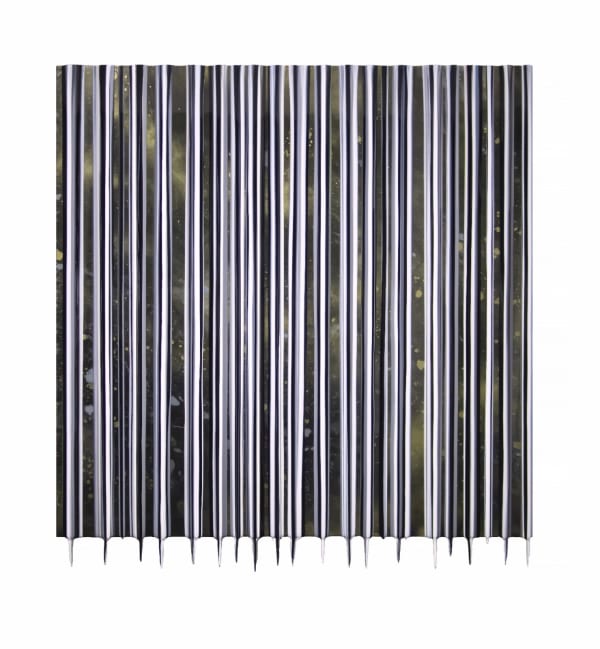Francisco Valverde
作品
传记
Francisco Valverde was born in 1972 and raised in Cuernavaca, Mexico, of a Cuban father and Mexican mother. Early in his career, he was known for his work in contemporary figurative painting. While teaching traditional techniques and large-format painting at Morelense Center for the Arts (Centro Morelense de las Artes), Francisco became inspired by his students’ search for their individual expression, which lead to his own quest for a new artistic practice.
Francisco began working on large canvases, using bottle dispensers filled with colourful synthetic materials instead of traditional paints and brushes. His goal was to re-create the essential element within drawing and painting: the line.
The resulting lines were imperfect and denied the traditional representative characteristic of a line, or what Francisco describes as “righteousness.” These paintings formed a rhythmic structure in which a certain order was realized. This was the start of his new direction.
Francisco’s current work utilizes plastic materials to build complexity.
These paintings utilize powerful lines with direction, suggestive backgrounds, mysterious forms, and varying depths to create a story.
Obsession and freedom are two words that Francisco uses to describe his current work: the obsession with daily routine, and the freedom he experimented with as a child drawing and scribbling on a piece of paper for the very first time. He recognizes that perhaps a certain commitment to tradition survives in the smooth finishes of his paintings. These paintings also remind the artist of the colourful, shiny candies he used to eat as a child at local fairs.
In 2016, Francisco was granted the XVII Bienal de Pintura Rufino Tamayo - Acquisition prize, the most prestigious art recognition in Latin America, among multiple awards recognizing his trajectory as a leading artist shaping Latin American art.
Permanent Collections:
Museo de Arte Contemporaneo de Oaxaca, Oaxaca, MX
Fort Wayne Museum of Art,Fort Wayne, IN
Watergate Building,Washington D.C.
Consejo para la Cultura y las Artes de Nuevo Leon (CONARTE), Monterrey, NL
Salma Hayek’s personal collection












